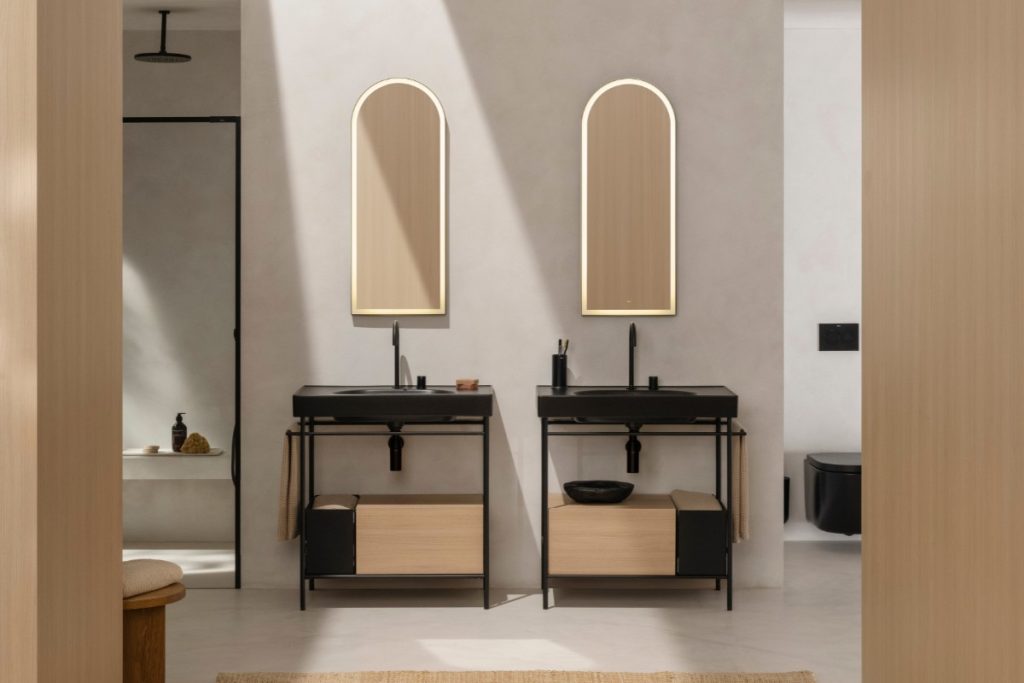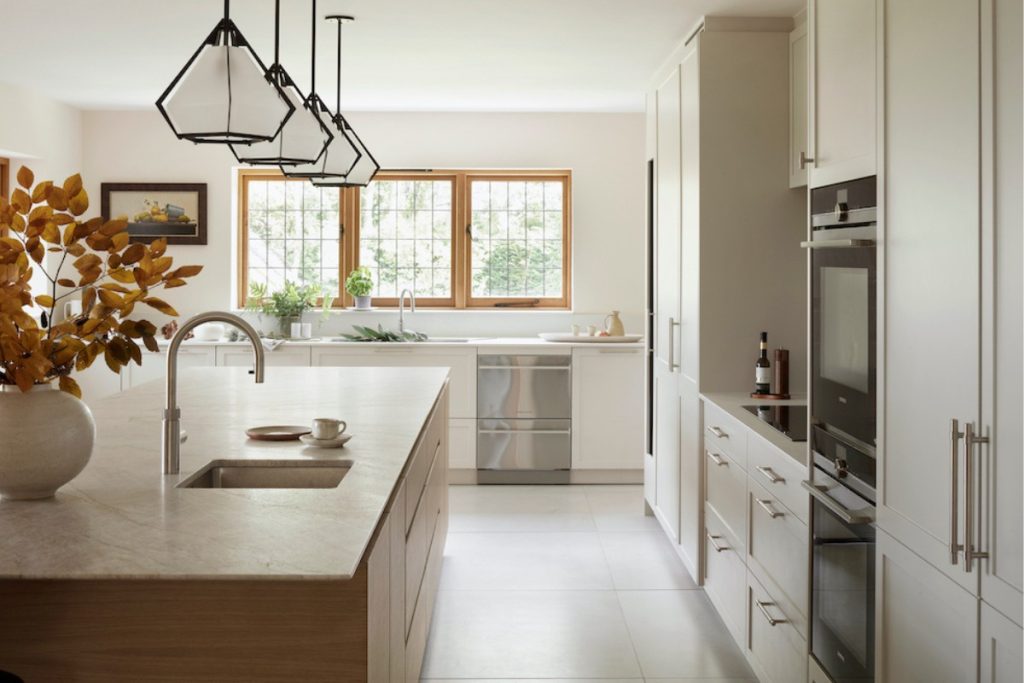 2nd August 2022 | IN DESIGN ADVICE | BY SBID
2nd August 2022 | IN DESIGN ADVICE | BY SBIDA common misconception, from those outside of the world of design, is that an interior designer lends their skills to all areas of the profession, fitting a residential interior one day and a yacht the next. Yet this isn’t always the case. As with most creative disciplines and professional careers, designers and design practices usually focus their skillset on a specific area of industry. This results in a more refined specialism, benefiting their business and client base alike.
As highlighted by the Society of British & International Interior Design (SBID), there are 12 design specialisms across the residential and commercial contract sectors. Each of which require sector-specific knowledge and are accompanied by their own regulations and legal factors.
For a young creative just breaking into the industry, the many areas of interior design can seem daunting or overwhelming. It may feel like in order to succeed, you have to be certain of your career path from the ouset, knowing exactly which niche of design you will pursue.
However, this need not be a cause of stress or anxiety. Instead, the many different fields should be seen as opportunities to research, learn and explore to discover the area that most interests you.
This article will outline the main areas that interior designers may choose to specialise in, as well as the ways in which SBID is of use.
Public Space Design
As the name suggests, designing for public spaces design involves the shaping and conceptualising of the areas that we share as a society. From airports and libraries, to parks and pavements, public spaces are a cornerstone of our social environment. They are the areas we share, travel through and exist in everyday.
A designer of public spaces has to consider a multitude of factors, such as the durability of surfaces, volume of foot traffic, adequacy of lighting and the aesthetic appeal of an area. The role of a public space designer should never be understated, they define the environments we share, making areas such as universities, train stations and shopping centres safe and appealing.
Retail design
Unlike public space design which focuses mainly on shared, open environments, retail design is the area is based around the interiors of shops, galleries, arcades and showrooms. As a retail designer, your skillset will be varied, incorporating elements of interior design, visual merchandising, architecture and advertising in order to make an environment as appealing and accessible as possible.
It is the job of a retail designer to create recognisable storefront identities, on-brand decor and ergonomic spaces to showcase products. In addition to the aesthetic elements of retail design, elements such as ventilation, lighting and acoustic control must be considered in order to assist sales and maximise customer satisfaction.
Government Design
Government designers are pre-approved professionals responsible for the design of areas such as schools, council buildings and diplomatic spaces. Designers need to be highly efficient and experienced to work on government projects due to the scale of workload and strict deadlines.
The role of a government designer is varied, ranging from administration and project management, to material sourcing, budget-control and aftercare. Government designers must focus their work around functionality, durability and longevity, creating spaces that suit a range of demographics and locations.
Workplace Design
Often overlooked in the discussion of interior design, workplace design centres itself around the layout and operation of professional and office environments. Considering everything from behavioural patterns, productivity and workflow to ventilation, posture and lighting. This area of design is crucial in the maximisation of employee performance, as well as ensuring that workers are comfortable and safe throughout their working day.
Effective workplace design increases the quality of work, reduces sick days and leads to a more enjoyable employee experience. When designed properly, professional spaces exist to meet the needs of both clients and employees, reflecting the brand identity and ethos of a company.
Residential Design
Perhaps the most commonly understood design specialism, residential design incorporates the design of home interiors, whether they are brand new or re-designs of existing homes and structures. Residential designers usually work directly with the end user, accommodating their personal needs such as family requirements and individual taste.
As well as the consideration of elements such as natural light, materials and interior decor, residential designers must consider the livability of spaces and the specific needs of their client to create an interior that is beautiful and functional for user lifestyles.
Aeronautical Design
Focused on the design and fitting of aeroplane interiors, aeronautical design is one of the more specialist areas of interior design. Very few design practices operate within this area due to the need for highly-experienced individuals. All materials utilised in the design of plane interiors must meet rigorous safety standards and performance specifications. Aeronautical design work should not be undertaken without appropriate training, experience and insurance.
Marine Design
Marine design is an area primarily focused on the design of yachts and cruise liners. With a luxurious client base often associated with marine design, it requires a high level of proficiency and qualification.
Similarly to aeronautical design, marine designers must adhere to equally strict compliance and safety regulations in order to minimise the risk to passenger safety. Designers must ensure that all materials and products used are in line with the standards set out by European or international law. Careful consideration will be paid to material selection and weight.
Transport Design
The world of transport design is ever-changing due to the speed at which technologies and consumer needs develop. Focused on various transportation methods, such as cars, trains and trams, transport design plays an important role in the everyday experience of the population. Often integrated with public spaces, the performance, durability and visual identity of transportation must be considered thoroughly.
Hospitality Design
Hospitality design is a specialism of interior design concerned with the functionality and appearance of commercial spaces such as hotels, restaurants, bars, nightclubs and casinos. Due to the sheer scale of the hospitality industry, designers play a crucial role in maximising the consumer experience within these spaces.
From the layout of a bar area, to the extravagant surroundings of a casino, hospitality designers consider all aspects of the design process. Taking into account everything from safety features to seat types, it is an incredibly varied role with similar regulatory requirements as public spaces.
Investor Refurbishment
Investor refurbishment involves the re-purposing or converting of a building to accommodate new requirements. For example, an investor may purchase a disused bank or factory with a plan to convert it to a restaurant or housing development. Massive alterations such as these need specialist knowledge and experience.
This area of interior design requires careful consideration, combining practical knowledge such as safety requirements and planning permission with managerial skills such as tight budget control and efficient material sourcing.
Healthcare and Wellness Design
This area of interior design focuses mainly on the needs of patients and their potential restrictions to ensure they receive the best quality of care possible. Be it the design of a dental practice, hospital, physiotherapy centre, care home or spa, healthcare and wellness design works to better the experience of patients and visitors within such spaces with accessibility, comfort and maintenance being key considerations.
Kitchen, Bedroom and Bathroom Design
Kitchen, bedroom and bathroom (KBB) design is often considered alongside residential design. However, over the last few decades, the industry has seen a surge in product and consumer demand in this area -enough to warrant its own sector within interior design.
Kitchen and bathrooms requires particular attention to space planning and it’s own area of design knowledge including electric, plumbing, extraction, heating, windows and water flow rates. As a KBB designer, the primary focuses are often layout, functionality and ergonomics. As spaces that are used actively and regularly, it is important that interior designers consider every aspect to suit the user’s lifestyle and ensure all the fine details are addressed, from the hinge radius of doors, to the proximity of plug sockets and use of natural lighting.
How Can SBID Professional Membership Help?
As an interior designer, choosing an area to specialise is just one step in developing your career as you embark on a path of life-long learning as a professional interior designer. Whether you are a student or emerging designer entering the industry, joining the Society of British & International Interior Design could be a huge step in the right direction.
Among our services, we support careers in interior design, granting accreditation as the highest form of recognition and offering industry resources, CPD learning, business support and access to events to help you forge your way within the world of interior design, as well as elevate your business prospects. All of which are designed to help you network and become more knowledgeable within the specialist areas of interior design.
To join the SBID today, get in touch with us via email at admin@sbid.org or call us on 0207 738 9383.



